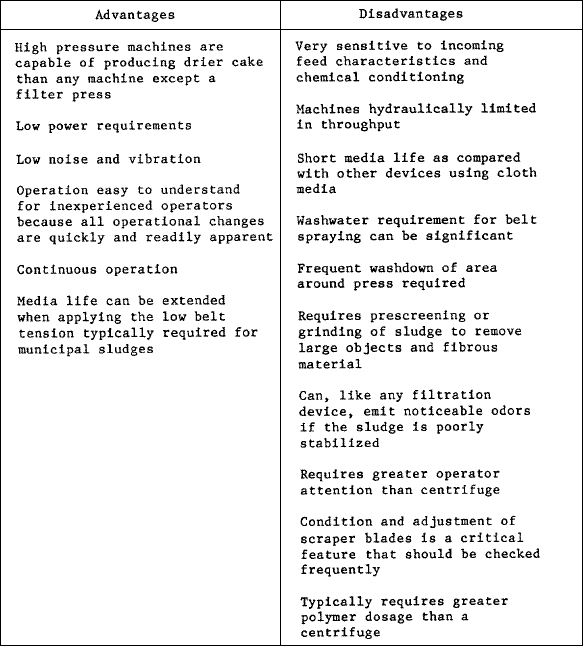
| Type of sludge | Mass loading ( lb / ft 2 . day ) |
| Primary sludge | 22 |
| Primary and trickling filter sludge | 15 |
| Primary and waste activated sludge | 6 - 10 |
| Waste activated sludge | 4 - 8 |
| Parameter | Typical value |
| Air pressure ( psig ) | 40 - 70 |
| Effluent recycle ratio ( % of influent flow ) | 30 - 150 |
| Detention time ( hr ) | 3 |
| Air : solids ratio ( lb / lb ) | 0.02 |
| Solids loading ( lb / ft 2 . day ) | 10 - 50 |
| Polymer addition ( lb / ton dry solids ) | 10 |
| Description | Fresh solids | Digested | ||
| FeCl 3 | CaO | FeCl 3 | CaO | |
| Primary | 1 - 2 | 6 - 8 | 1.5 - 3.5 | 6 - 10 |
| Primary and trickling filter | 2 - 3 | 6 - 8 | 1.5 - 3.5 | 6 - 10 |
| Primary and waste activated | 1.5 - 2.5 | 7 - 9 | 1.5 - 4.0 | 6 - 12 |
| Waste activated ( alone ) | 4 - 6 | - | - | - |




| Type of sludge | Open beds | Covered beds |
| Primary digested | 1.5 | 1.0 |
| Primary and trickling filter digested | 1.75 | 1.25 |
| Primary and activated sludge digested | 2.5 | 1.5 |
| Primary and chemically precipitated sludge digested | 2.5 | 1.5 |

